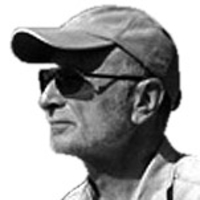By the time David Frost secured his revelatory 1977 interview with Richard Nixon, vividly revived in the play and movie Frost-Nixon, television journalism in the U.S. had other hard-nosed interviewers who were equally or even more familiar like Barbara Walters and Mike Wallace.

Indeed, the major networks had spurned the Nixon interviews and they were shown via an improvised syndication deal engineered with desperation by Frost. There was little appreciation that it was Frost himself, in the 1960s, who had brought an entirely new level of aggression to confrontations with the mighty and the illustrious.
He burst upon British television like a fiery tribune of the people, conducting interviews live and with a studio audience—something never done before—five nights a week at primetime from a London broadcaster, Rediffusion.
But it was the BBC that discovered him as a young stand-up comedian and gave him the role of a mock news anchor on a show called That Was The Week That Was. Although it was billed as satire, the material was current and politically savage, particularly and brilliantly making fun of Prime Minister Harold Macmillan and his government.
Propelled to almost overnight stardom by That Was The Week (itself one of the inspirations for Saturday Night Live) Frost felt that satire would restrict him, even though the show and his material marked a revolution in its lack of respect for and deference to the BBC’s previously timid rules of political coverage. He also encountered hostility among the corporation’s “serious” broadcasters who felt strongly that television journalism should not be “entertainment” and that Frost was, in manner and cast of mind, an entertainer.
Frost, on the other hand, realized that television journalism, rid of pomp and ready to pose questions framed not by respectful editors but informed by a sense of how a vox pop audience would ask them, could become a gripping new public forum. He deliberately took a year off from television and enlisted a small band of journalists, including me, to work out the form of the show he would anchor, called simply (and grandly) The Frost Programme.
At first the journalism was punctuated by short satirical sketches (many of them written by the future cast of Monty Python’s Flying Circus) and it seemed an uneasy compromise—enforced by the broadcaster’s conviction that a primetime show must be leavened. But gradually Frost was able to lure for interviews senior politicians and luminaries from all sides of public life. Many of these were responding to what seemed an almost gladiatorial challenge, as Frost’s instinct for the sudden, revealing question would strike home and leave blood on the floor.

For example, in an interview conducted over the phone with the prime minister of what was then still colonial Rhodesia, Ian Smith (all the audience saw of Smith was a still portrait), who was breaking away from the British Commonwealth in order to sustain white rule, Frost asked him: “Would you let your daughter marry a black man?”
Smith was aghast: The idea had clearly never crossed his mind.
And there was an interview filmed on location at Spandau Prison in Berlin with the Nazi who had led the Hitler Youth, Baldur von Schirach. After von Schirach glossed over his egregious past, Frost asked him if there was anything that he regretted. “Yes,” he said, “they make me destroy my tomatoes.” The prison had permitted him to grow them, but not harvest them.
The studio audience was often seeded with people who had an interest in the person being interviewed. This frequently led to heated exchanges between the guest and the public which Frost mediated with great, impromptu skill. This kind of combat reached its apotheosis when the guest was an insurance swindler called Emile Savundra. Some of Savundra’s victims were in the audience, and tore his self-righteous defense to shreds.
This degree of activist journalism—Savundra was soon jailed—upset some people who called it “trial by television.” Frost’s response was that he had achieved what several newspaper investigations had not—the public humiliation and collapse of a rogue.
After two seasons and 104 programs, Frost was established as the most formidable interviewer on television. Part of his skill was that he and the television camera were fused into one. The unblinking electronic eye was an extension of his own reflexes and acuity—when the red light went on, all else was excluded.
He also had what so many interviewers lack, the ability to listen to an answer without checking what the next question was supposed to be. He frequently abandoned the planned architecture of an interview when an unexpected answer opened up the chance of an entirely different narrative.
Even to talk of an “architecture” loses the picture of how he worked. Always on his lap was a clipboard. You might suppose that this bore the plan—the key points that had to be addressed, the fruits of deep research. But nobody close to Frost could understand the strange assembly of what seemed hieroglyphics or transcriptions from ancient Greek texts scribbled all over the legal pad. He had created a kind of cypher, without any obvious hierarchy of order.
Frost also had another gift that was a true metaphor of the technology that he had mastered: a mind that worked like a video tape. Before every interview he soaked up every detail of the research and—solely for the duration of that program—he was the master of it. Once the subject was dealt with, once the interviewee had left the green room, it would be wiped clean.
Tomorrow was another challenge.






